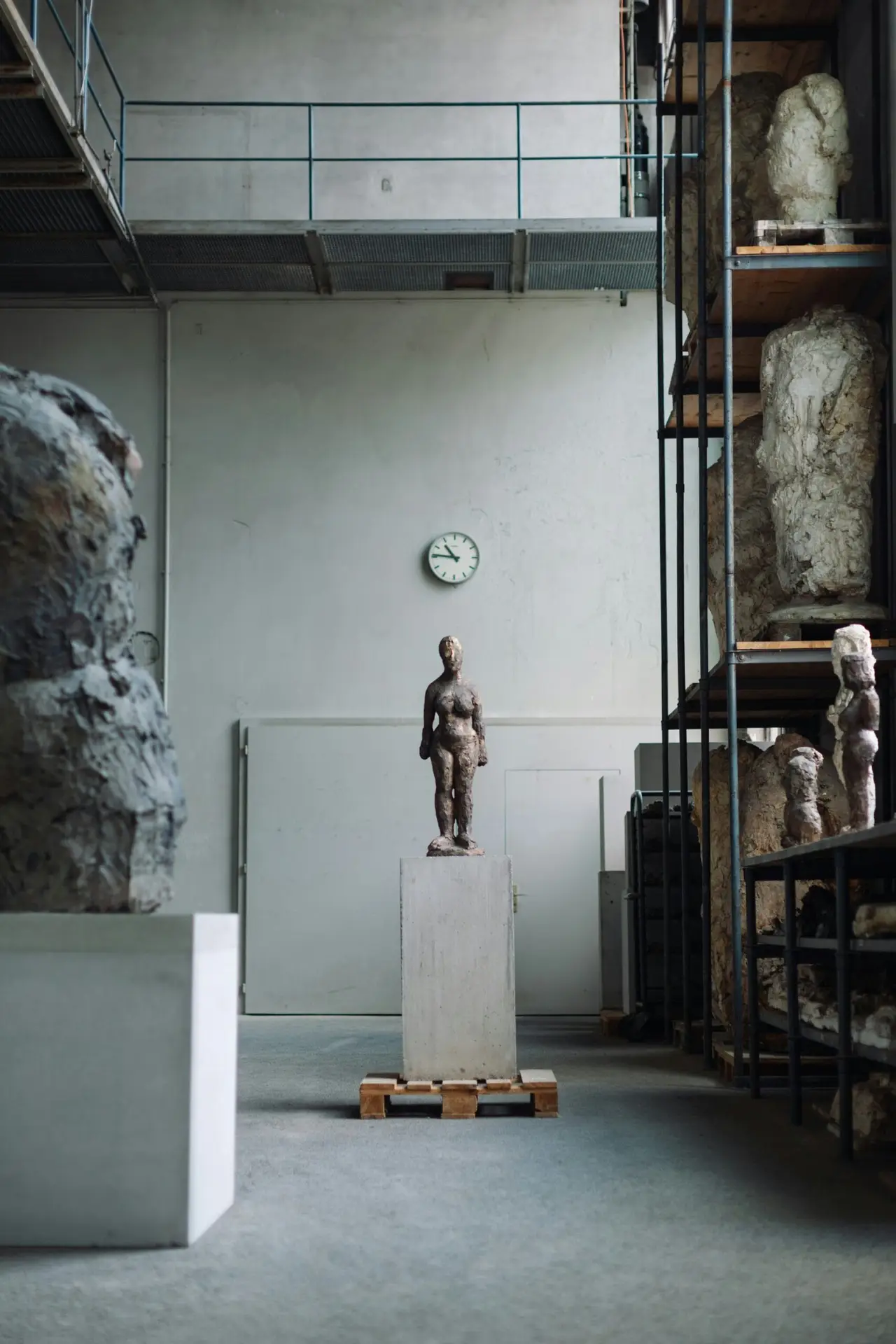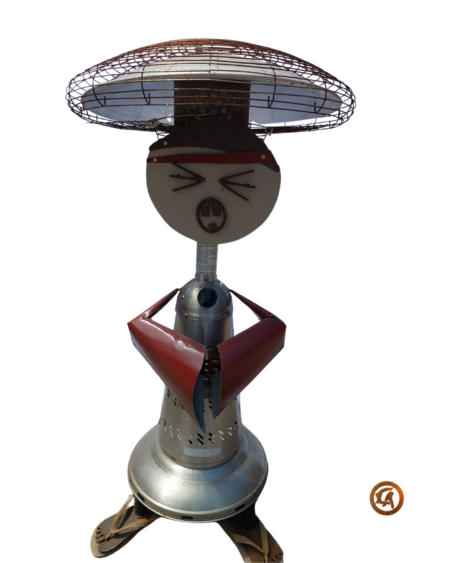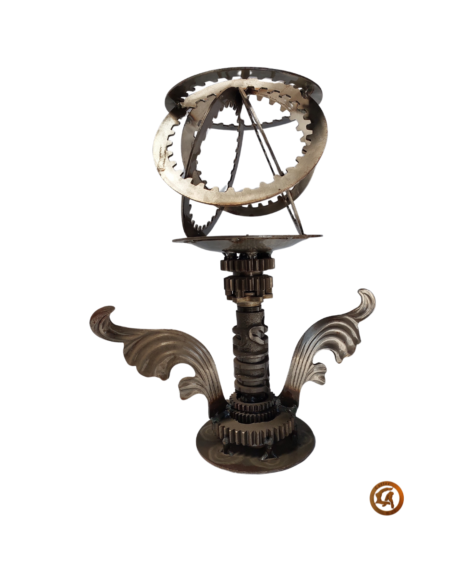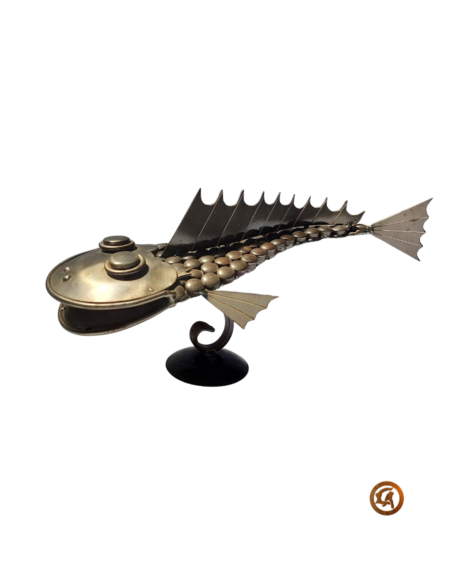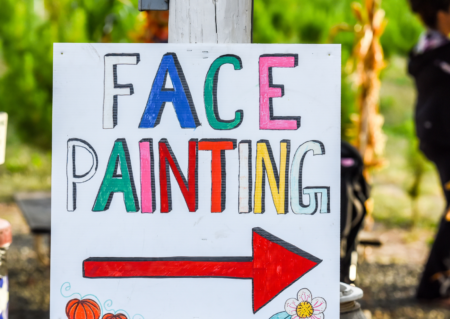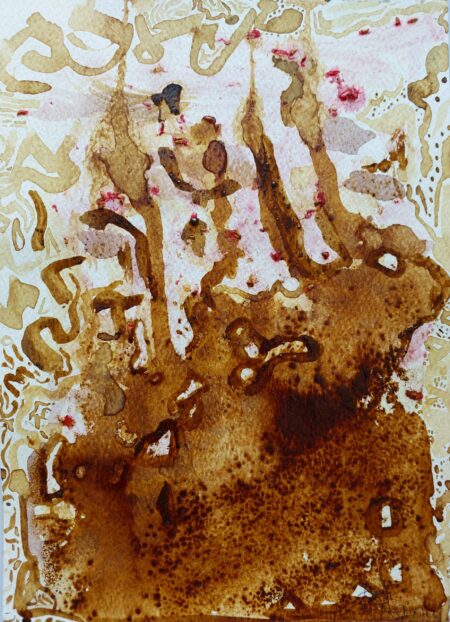Introduction to Art Collecting as an Investment
Art collecting has increasingly emerged as a formidable avenue for investment, intertwining personal passion with financial gain. Historically, art has played a pivotal role in the accumulation of wealth, often serving as a status symbol among the affluent. Esteemed works have graced the walls of palaces and galleries for centuries, providing not just aesthetic pleasure but also tangible monetary value. As global markets evolve, the value of art continues to be pronounced, establishing its reputation as a reliable safeguard against inflation and economic downturns.
The functioning of the art market is uniquely different from traditional investment avenues such as stocks or bonds. Art rarely adheres to standard valuation metrics; its worth is often subjective, influenced by current trends, cultural shifts, and the stature of the artist. However, this volatility can be harnessed by astute collectors who understand the nuances of the market. Provenance, or the history of ownership of a particular piece, significantly impacts its desirability and potential appreciation in value. Investing in art demands a keen eye and a comprehensive understanding of trends, which can sometimes reward collectors handsomely.
Moreover, art as an investment can offer diversification to one’s portfolio. While conventional economic factors may lead to fluctuations in stocks, art often showcases a low correlation with overall market shifts. Such characteristics make art an appealing choice for those seeking to mitigate risk while optimizing returns. Furthermore, the emotional connection that comes with art can provide substantial intrinsic value, transforming the mere act of collecting into a deeply fulfilling pursuit.
As we delve deeper, we will explore the various dimensions of art collecting and its implications for wealth accumulation, illustrating how passion can be successfully aligned with profit in this unique investment landscape.
The Rise of Modern Art Collectors
The contemporary art scene has witnessed a remarkable transformation in recent years, giving rise to a new wave of modern art collectors. These individuals, often driven by a profound passion for artistic expression, are now emerging not only as patrons but also as savvy investors who recognize the potential for financial gain. The evolution of the art market has played a pivotal role in this phenomenon, influenced by several key factors that contribute to the increasing value of specific artworks.
One significant factor behind the rise of modern art collectors is the accessibility of information through digital platforms. Online galleries, auction houses, and social media have democratized art knowledge, enabling new collectors to learn about different styles, artists, and market trends more easily. This newfound information empowers enthusiasts to make informed decisions, fostering an environment where collecting art can be approached with both passion and strategy.
Furthermore, the globalization of the art market has expanded the reach of artists and artworks beyond traditional boundaries. Collectors today are increasingly inclined to explore diverse artistic expressions from around the world, thereby enriching their collections with pieces that reflect various cultural narratives. This international perspective has not only broadened the appeal of contemporary art but has also spurred competition among collectors, driving up demand and values for sought-after pieces.
The influence of generational shifts cannot be understated, as younger collectors, particularly millennials and Generation Z, are embracing modern art in unprecedented numbers. Their affinity for investing in art that resonates with their values and aesthetic sensibilities has introduced fresh dynamics to the market. As these new collectors assert their preferences, they create opportunities for emerging artists while simultaneously shaping the future of art collecting.
In conclusion, the rise of modern art collectors has transformed the landscape of the art market. These collectors, motivated by a blend of passion and investment potential, are actively participating in a vibrant ecosystem that continues to evolve and thrive.
The Sale of Jean-Michel Basquiat’s Work
In May 2017, the art world was agog when Jean-Michel Basquiat’s painting, “Untitled,” fetched an astonishing $110.5 million at auction, setting a record for an artwork by an American artist. This piece, created in 1981, exemplifies Basquiat’s distinctive style, characterized by its raw energy, vibrant colors, and an amalgamation of text and imagery that critiques social hierarchies and cultural dynamics. The significance of this artwork lies not only in its price but also in its representation of the neo-expressionism movement, which Basquiat significantly influenced.
The history of “Untitled” is as fascinating as its final sale price. Initially purchased for a mere $19,000, this painting remained within the collection of the prominent art dealer and collector, Yves Bouvier, for many years. Bouvier acquired the piece from a prominent gallery during the early 2000s when interest in street art, particularly Basquiat’s work, began to soar. As the art market evolved and collected more contemporary pieces, Basquiat’s work emerged as a lucrative investment, exhibiting a remarkable appreciation in value.
Upon sale, the anonymity of the buyer added a layer of intrigue to the transaction. The successful sale not only highlighted the growing appetite for contemporary art but also reinforced Basquiat’s position as a critical figure within the art scene. Collectors are increasingly drawn to the cultural commentary embedded in his works, recognizing them as not just aesthetic but also historically and socially significant.
Ultimately, the sale of “Untitled” serves as a prime case study in the art market, demonstrating the immense potential for profitability when passion for art aligns with shrewd investment choices. The increase in value illustrates how deeply the art community values Basquiat’s legacy, transforming his passion into an impressive financial return for savvy collectors.
Real-Life Success Stories of Art Collectors
Throughout the world of art collecting, numerous individuals have transformed their passion for art into profitable ventures. One prominent example is the story of David Geffen, an American music executive and philanthropist. Geffen has accumulated an impressive collection featuring works by renowned artists such as Jackson Pollock and Mark Rothko. In 2017, he sold Pollock’s “Number 17A” for an astonishing $200 million, making headlines and solidifying his status as a savvy art collector. His journey exemplifies how informed investment decisions and a strong appreciation for art can yield substantial financial gain.
Another notable instance is that of Peggy Guggenheim, an early advocate for modern art. Guggenheim’s collection, which included pieces by Pablo Picasso and Marcel Duchamp, once resided in her Grand Canal palazzo in Venice. When she passed away in 1979, the collection became the foundation of the Peggy Guggenheim Collection in Venice. Particularly, her investment in abstract art has inspired countless collectors, showcasing how passion paired with foresight can yield both cultural and financial benefits.
Additionally, consider the story of a contemporary collector named Eli Broad. Broad built a diversified collection comprising works from esteemed artists such as Andy Warhol and Jeff Koons. Through his vision and clear understanding of market trends, he transformed his extensive collection into a public institution known as The Broad Museum in Los Angeles. His decision to sell several pieces from his collection not only benefited his personal finances but also contributed to the enriching of public resources related to art.
-
 Maina Face Painting$20.00
Maina Face Painting$20.00
These narratives illustrate that successful art collectors often blend their passion with strategic insights. By carefully selecting artworks that resonate with their personal tastes while also considering market value, they can achieve remarkable financial outcomes. Such stories serve to inspire aspiring collectors, demonstrating that with dedication and informed choices, art collecting can indeed become a profitable endeavor.
Understanding the Art Market Dynamics
The art market is a multifaceted arena characterized by various components that influence the buying and selling of artworks. Comprised of galleries, auction houses, art fairs, and private sales, this market operates with a unique set of dynamics that can prove elusive even for seasoned investors. One of the primary trends in the contemporary art market is the increasing impact of digital platforms, which have facilitated a broader reach for both artists and collectors. These platforms have enabled artists to showcase their work to a global audience, ultimately influencing market trends and potentially altering price valuations.
Auctions play a significant role in determining art value, as they reflect both current demand and the historical significance of pieces. High-profile sales at major auction houses can elevate the market prices of similar works, setting a precedent that influences future valuations. For instance, record-breaking auction results often spark a surge in interest for certain artists or styles, leading to fluctuations in secondary market pricing. Understanding these trends is crucial for anyone looking to navigate the art market effectively.
Provenance, or the history of ownership of a particular piece of art, is another critical factor in determining value. Well-documented provenance adds authenticity and can significantly enhance an artwork’s worth. Collectors and investors who are adept at assessing provenance are better positioned to make informed decisions. In addition to provenance, the condition of the artwork, its rarity, and the reputation of the artist greatly influence its market standing. Global events can also have a profound effect; economic downturns, shifts in consumer sentiment, or even changes in cultural appreciation can reshape the dynamics of the art world. Thus, anyone engaging in this market must remain informed and analytical, employing a nuanced understanding of various factors at play.
The Emotional and Cultural Value of Art
The appreciation of art extends beyond its monetary worth; it embodies deep emotional connections and reflects cultural heritage. Art plays a crucial role in expressing personal taste, allowing individuals to curate their surroundings with pieces that resonate with their identities and values. This inherent connection transforms art into more than just an investment; it becomes a significant aspect of one’s life and an expression of individuality.
Moreover, the cultural value of art is profound, as it serves as a repository of societal identity and collective memory. Artworks can encapsulate historical events, social movements, or cultural narratives, providing insight into the experiences of different communities. By owning or collecting art, individuals become custodians of these narratives, enabling them to connect with their heritage and share it with future generations. This relationship between art, culture, and identity highlights its dual significance as both a personal and collective investment.
-
Product on sale
 The CaffeinatorOriginal price was: $600.00.$450.00Current price is: $450.00.
The CaffeinatorOriginal price was: $600.00.$450.00Current price is: $450.00.
In addition to the emotional resonance, art can also evoke a sense of belonging. For instance, local artists often reflect the unique experiences and perspectives of their communities. Supporting these artists not only contributes to the local economy but also fosters a sense of unity and pride among residents. This intertwining of artistic expression and community spirit illustrates how the value of art transcends mere financial investment, positioning it as a vital element of cultural identity.
Ultimately, while the financial potential of art is important, its emotional and cultural contributions are equally significant. The dual nature of valuing art encourages a broader perspective that recognizes both its marketability and its ability to enrich lives, fostering a deeper appreciation for art and its role in society.
Tips for Aspiring Art Collectors
Embarking on the journey of art collecting can be both exciting and daunting. For those looking to cultivate an art collection, it is essential to approach this endeavor with careful planning and informed decision-making. One of the primary steps in this process is setting a budget. Establishing how much one is willing to invest in art helps to narrow down choices and prevents impulsive purchases. It is advisable to factor in costs such as insurance, potential framing, and maintenance over and above the acquisition price.
Researching various art styles and movements forms a critical component of gathering knowledge that will aid in making informed acquisitions. Aspiring collectors should familiarize themselves with notable artists, understand the nuances of different art forms, and stay updated on contemporary art trends. Joining art forums, attending exhibitions, and reading books or articles can provide valuable insights into what resonates personally and what is currently in demand within the art market.
Understanding the market trends is another vital aspect. Art prices fluctuate based on prevailing tastes and economic conditions, so it is beneficial to keep an eye on auction results, gallery exhibitions, and art fairs. Engaging with seasoned collectors and art dealers can also provide helpful context and guidance. Networking within the art community can open doors to exclusive events and access to sought-after works, as connections often lead to unique opportunities that may not be publicly advertised.
Ultimately, aspiring art collectors must balance passion with pragmatism. By adhering to a budget, conducting thorough research, understanding market trends, and engaging with fellow art lovers, one can navigate the complexities of art collecting effectively. This well-rounded approach not only enhances the collecting experience, but also lays the foundation for a rewarding artistic journey.
Challenges and Risks in Art Collecting
Art collecting can be a deeply rewarding endeavor, yet it is not without its challenges and risks. One of the most significant issues faced by collectors is market volatility. The value of art can fluctuate dramatically based on a variety of factors, including trends in taste, economic conditions, and the reputations of individual artists. Consequently, a piece deemed valuable today might suffer a decline in worth in the future. This unpredictable nature of art as an investment necessitates a well-informed approach and an understanding of market dynamics.
Another substantial risk in art collecting is the potential for counterfeit art. The art world, despite its allure, is unfortunately rife with forgeries and misattributions. Even seasoned collectors can fall victim to deceit if they do not perform due diligence. It is essential to verify the provenance and authenticity of a piece prior to acquisition. This often involves consulting with experts, acquiring authentication certificates, and conducting thorough background research on the artist and their works. Without proper verification, collectors may find themselves investing in pieces that lack genuine value.
Moreover, the challenge of liquidity presents an additional layer of complexity to art collecting. Unlike stocks or bonds, converting art into cash does not have a straightforward process. Art transactions can be lengthy and costly, involving auctions, commissions, and additional fees. Furthermore, finding a willing buyer who appreciates the same value can be arduous, potentially resulting in significant wait times or unfavorable sales conditions. This challenge emphasizes the importance of approaching art collecting with a long-term outlook and a willingness to navigate these hurdles carefully.
In light of these challenges and risks, prospective art collectors must equip themselves with knowledge and resources. By remaining vigilant and proactive, they can mitigate potential pitfalls and make informed decisions in their art ventures.
Conclusion: The Future of Art Collecting as an Investment
The landscape of art collecting is undergoing a significant transformation as more individuals recognize art as a legitimate investment vehicle. Historically, art was often viewed merely as a decorative element, but in recent years, it has gained traction among investors seeking alternative assets. The growing trend highlights the dual benefits that art can offer, including emotional fulfillment and potential financial returns.
As the art market continues to expand, various factors are influencing the future of art collecting. The rise of digital platforms and online auctions has democratized access to art, enabling both seasoned collectors and newcomers to participate in the market. This accessibility fosters a diverse range of collectors, further driving demand and potentially enhancing the value of artworks over time. Additionally, contemporary artists are increasingly enjoying recognition, leading to a surge in interest in their works from investors aiming to capitalize on emerging talents.
The integration of art into investment portfolios is supported by a shifting perception of assets. Investors are acknowledging that traditional investment vehicles, such as stocks and bonds, may not provide sufficient diversification in times of economic uncertainty. In this context, art stands out as an attractive alternative, capable of appreciating in value while also offering aesthetic joy to its owners. Collecting art can, therefore, be viewed as a wise financial strategy that aligns with personal taste and cultural appreciation.
It is essential for future collectors to approach art investments with informed decision-making and an understanding of market trends. By cultivating a keen sense of what to look for and remaining aware of the evolving dynamics in the art world, collectors can navigate this vibrant market successfully. Ultimately, the future of art collecting is promising, merging passion with potential profit and enabling a new generation to experience the wealth that art can truly offer.

